Ettore Forti
Ettore or Eduardo Ettore Forti was an Italian painter, who was prolific in depicting realistic Neo-Pompeian scenes of Ancient Roman life and events. These subjects were popular in the late-Victorian period, as exemplified by the popularity of Lawrence Alma-Tadema.[1]
There is little definitive information available about Forti's biography. His paintings are signed with his name and Rome. Different sources can not cite a place of birth or birth date, and do not agree about a birth date. Nothing is known of his training. Many sources claim he was active a few decades before and after 1900. He exhibited in Berlin between 1893 and 1897. He exhibited at the Mostra della Romana Società degli Amatori e Cultori in 1905.[2]
One favorite topic is an salesman displaying artwork, jewelry, or rugs to well-dressed female patrician women, often in elegant settings.
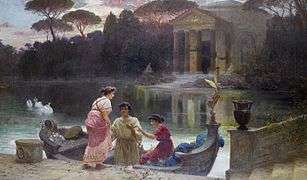 Evening at the temple
Evening at the temple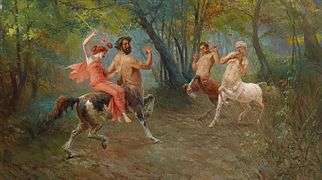 Feast of Centaurs
Feast of Centaurs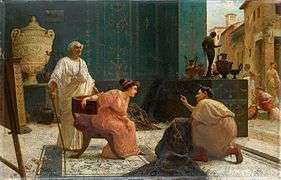 Rug Merchant in Ancient Rome
Rug Merchant in Ancient Rome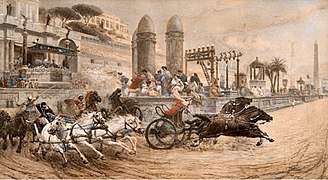 Chariots racing in the Circus Maximus
Chariots racing in the Circus Maximus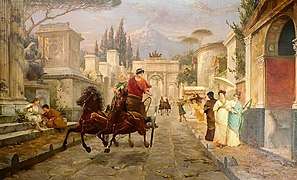 Pompeii Street Scene
Pompeii Street Scene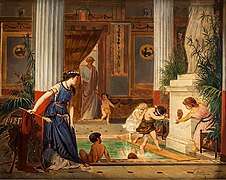 The Bath (?)
The Bath (?).jpg) The Carpet Seller (1)
The Carpet Seller (1).jpg) The Carpet Seller (2)
The Carpet Seller (2).jpg) The Carpet seller (3)
The Carpet seller (3).jpg) The Carpet seller (4)
The Carpet seller (4).jpg) The Carpet Seller (5)
The Carpet Seller (5) Chariot Racing
Chariot Racing Racing Chariots Entering The Circus Maximus
Racing Chariots Entering The Circus Maximus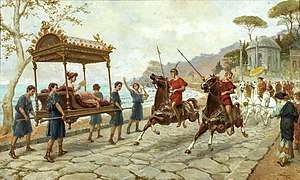 Road to Pompeii
Road to Pompeii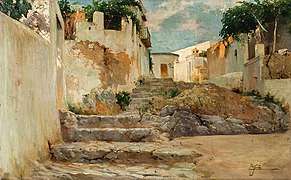 Steps(?)
Steps(?)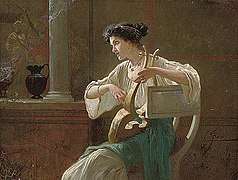 The Harpist(?)
The Harpist(?) In A Jewelry Store
In A Jewelry Store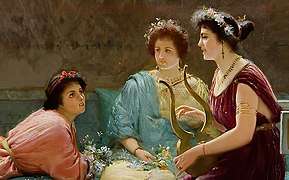 Detail from a Pompeii Love Song
Detail from a Pompeii Love Song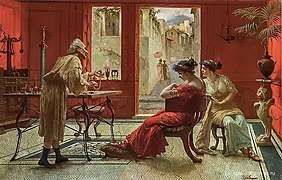 In A Jewelry Store
In A Jewelry Store Pompeii Street
Pompeii Street Art Seller
Art Seller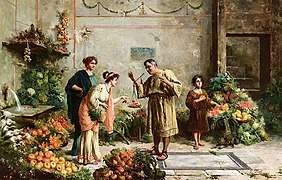 Fruit Vendor
Fruit Vendor Hadrian returns from Tivoli
Hadrian returns from Tivoli In the Roman Palace
In the Roman Palace Inside A Roman Villa
Inside A Roman Villa Pompeii Love Song
Pompeii Love Song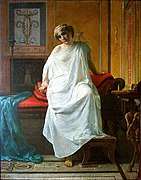 The Bedchamber(?)
The Bedchamber(?)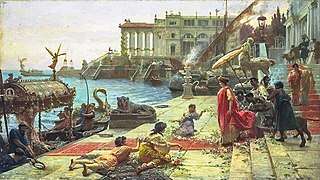 The Embarkment of a Roman Queen
The Embarkment of a Roman Queen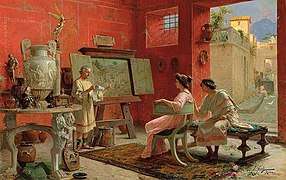 The Art Seller
The Art Seller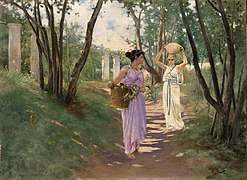 Burdens(?)
Burdens(?)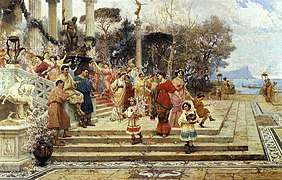 Festival
Festival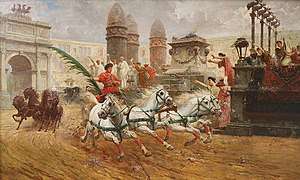 Greeting The Victor
Greeting The Victor Rug Merchants
Rug Merchants The Musicians
The Musicians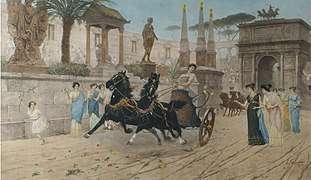 Victory
Victory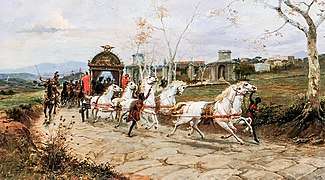 Arrival of Caesar
Arrival of Caesar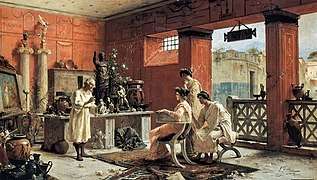 At the Antiquarian's
At the Antiquarian's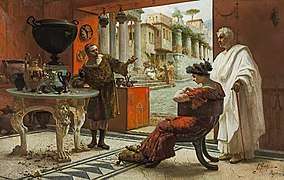 The Vendor of Antiquities
The Vendor of Antiquities Quadriga on the Road to Pompeii(?)
Quadriga on the Road to Pompeii(?).jpg) The Carpet Seller (6)
The Carpet Seller (6) Roman Street Scene
Roman Street Scene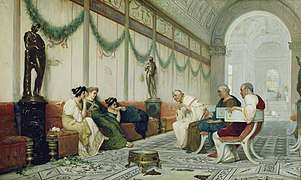 Interior of a Roman Building with Figures
Interior of a Roman Building with Figures
References
- Getty Museum, Interior of Roman Building with Figures.
- Istituto Matteucci, short biography.